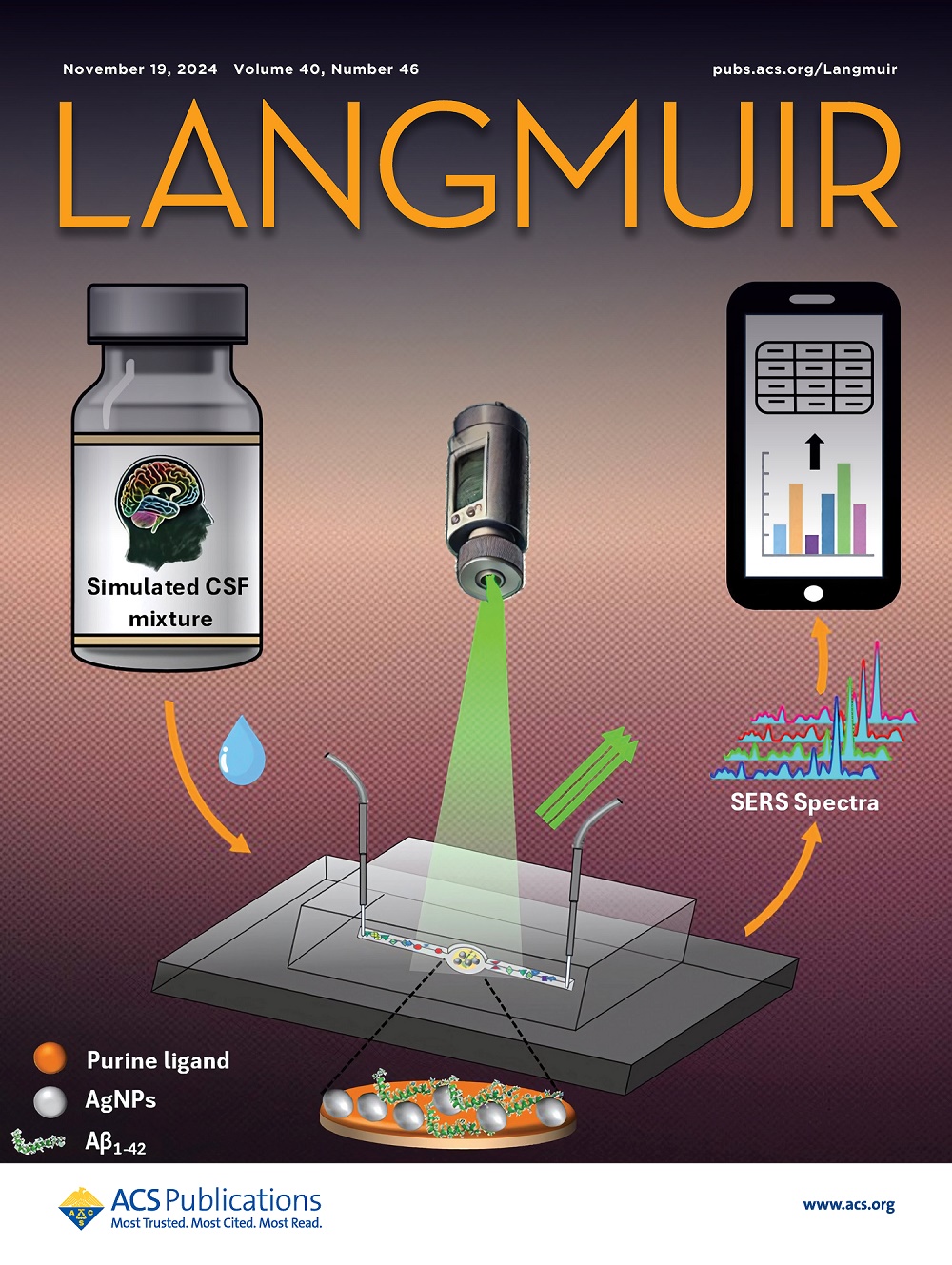水热法调整中孔-大孔硅胶整体体的介孔网络-物理吸附研究
IF 3.7
2区 化学
Q2 CHEMISTRY, MULTIDISCIPLINARY
引用次数: 0
摘要
由Nakanishi博士开发的溶胶-凝胶工艺制备的大介孔硅胶整体柱,由于其3d连接的大孔与介孔相结合,提供了高表面积,显示出有利的流动和分离性能。在此基础上,它们通常用于分析液相色谱。在合成过程中,通过在基本条件下(通常在80°C - 100°C范围内)进行水热处理的蚀刻步骤来实现介孔尺寸和互连的微调。本研究旨在通过对所产生的介孔网络的全面分析来揭示这一苛刻过程的细节。因此,在80 - 110°C的水热处理温度(HTT)范围内制备了一系列二氧化硅单体,从而调节了介孔率。压汞孔隙测量证实,HTT增强不会改变大孔尺寸,只会影响中孔空间。该研究采用了最先进的物理吸附分析,使用了两种吸附剂,Ar (87 K)和N2 (77 K),以确定中孔大小和网络连通性的变化作为HTT的函数。此外,在相同的材料上进行了先进的滞后扫描,提供了对孔隙网络效应的独立见解。这些分析表明,随着高温温度的增加,平均介孔尺寸从8 nm(80℃)增加到约25 nm(110℃),并且孔径分布变宽,表明在高温温度下SiO2的溶解明显。令人惊讶的是,随着HTT的增加,总介孔体积保持不变,这意味着SiO2的溶解-再沉淀机制,而不仅仅是蚀刻。重要的是,深入的孔隙度分析表明,颈状结构的尺寸增加了,这减少了中孔网络连通性的限制。此外,这些数据与最近提出的单块体的空间介孔尺寸梯度一致,我们发现这在较低的高温下是相关的,并且在较高的高温下系统地减小。本文章由计算机程序翻译,如有差异,请以英文原文为准。

Tuning the Mesopore Network in Meso-Macroporous Silica Monoliths by Hydrothermal Treatment – A Physisorption Study
Macro-mesoporous silica monolith columns, prepared by a sol–gel procedure developed by K. Nakanishi, show beneficial flow and separation properties due to their 3D-interconnected macropores in combination with mesopores, providing a high surface area. Building on this, they are routinely used in analytical liquid chromatography. Within the synthetic process, fine-tuning of the mesopore dimension and interconnection is achieved by an etching step involving hydrothermal treatment under basic conditions, typically in the range of 80 °C–100 °C. The present study aims to unravel details of this harsh procedure by a comprehensive analysis of the resulting mesoporous network. Thus, a series of silica monoliths was prepared across a range of hydrothermal treatment temperatures (HTT) between 80 and 110 °C, thereby tuning the mesoporosity. Mercury intrusion porosimetry confirmed that enhanced HTT does not alter the macropore dimension and only affects the mesopore space. The study employed state-of-the-art physisorption analysis applying two adsorptives, Ar (87 K) and N2 (77 K), to identify changes in the mesopore size and network connectivity as a function of HTT. Also, advanced hysteresis scanning was performed on the same materials, providing independent insights into pore network effects. These analyses indicate that increasing HTT systematically enhances the average mesopore size from 8 nm (80 °C) to approximately 25 nm (110 °C) and widens the pore size distribution, pointing to pronounced dissolution of SiO2 at higher HTT. Surprisingly, the total mesopore volume remains constant upon increasing the HTT, implying a dissolution-reprecipitation mechanism for SiO2, rather than mere etching. Importantly, the in-depth porosity analysis reveals an increase in the size of necks, which reduces restrictions in the mesopore network connectivity. Furthermore, the data are in line with a recently proposed spatial mesopore size gradient in monoliths, which we find to be relevant at lower HTT and to systematically diminish toward higher HTT.
求助全文
通过发布文献求助,成功后即可免费获取论文全文。
去求助
来源期刊

Langmuir
化学-材料科学:综合
CiteScore
6.50
自引率
10.30%
发文量
1464
审稿时长
2.1 months
期刊介绍:
Langmuir is an interdisciplinary journal publishing articles in the following subject categories:
Colloids: surfactants and self-assembly, dispersions, emulsions, foams
Interfaces: adsorption, reactions, films, forces
Biological Interfaces: biocolloids, biomolecular and biomimetic materials
Materials: nano- and mesostructured materials, polymers, gels, liquid crystals
Electrochemistry: interfacial charge transfer, charge transport, electrocatalysis, electrokinetic phenomena, bioelectrochemistry
Devices and Applications: sensors, fluidics, patterning, catalysis, photonic crystals
However, when high-impact, original work is submitted that does not fit within the above categories, decisions to accept or decline such papers will be based on one criteria: What Would Irving Do?
Langmuir ranks #2 in citations out of 136 journals in the category of Physical Chemistry with 113,157 total citations. The journal received an Impact Factor of 4.384*.
This journal is also indexed in the categories of Materials Science (ranked #1) and Multidisciplinary Chemistry (ranked #5).
 求助内容:
求助内容: 应助结果提醒方式:
应助结果提醒方式:


